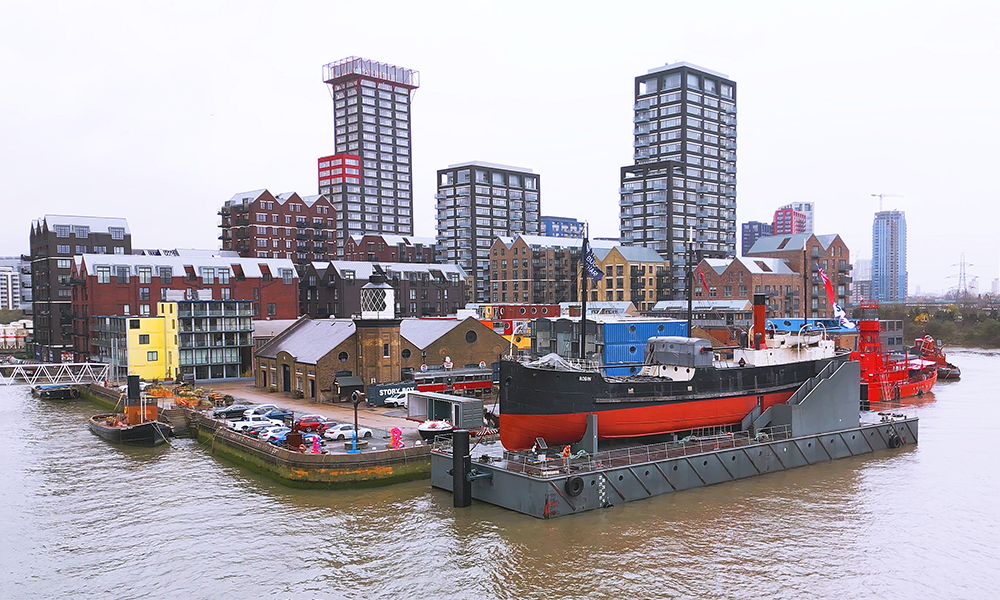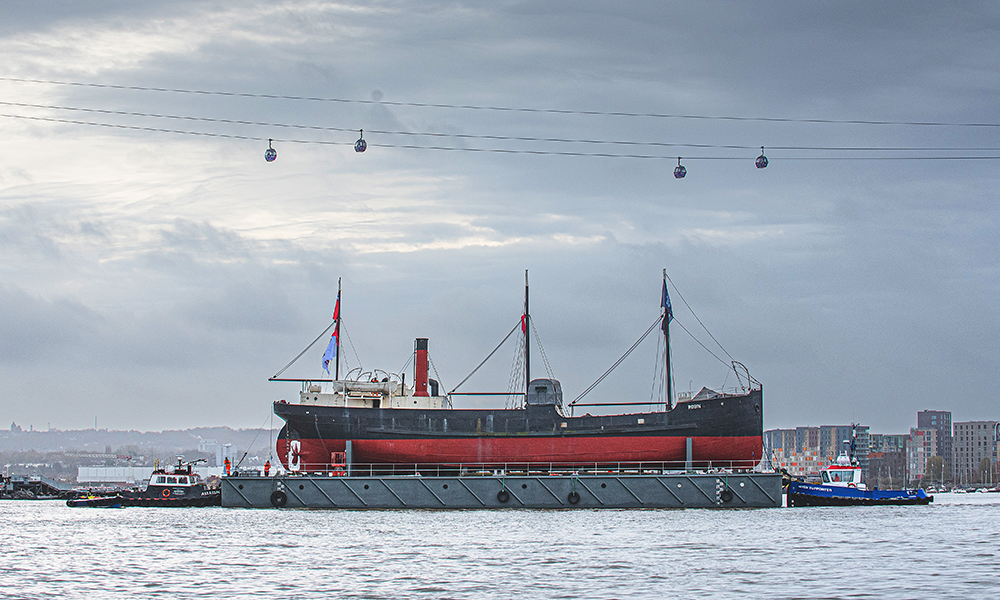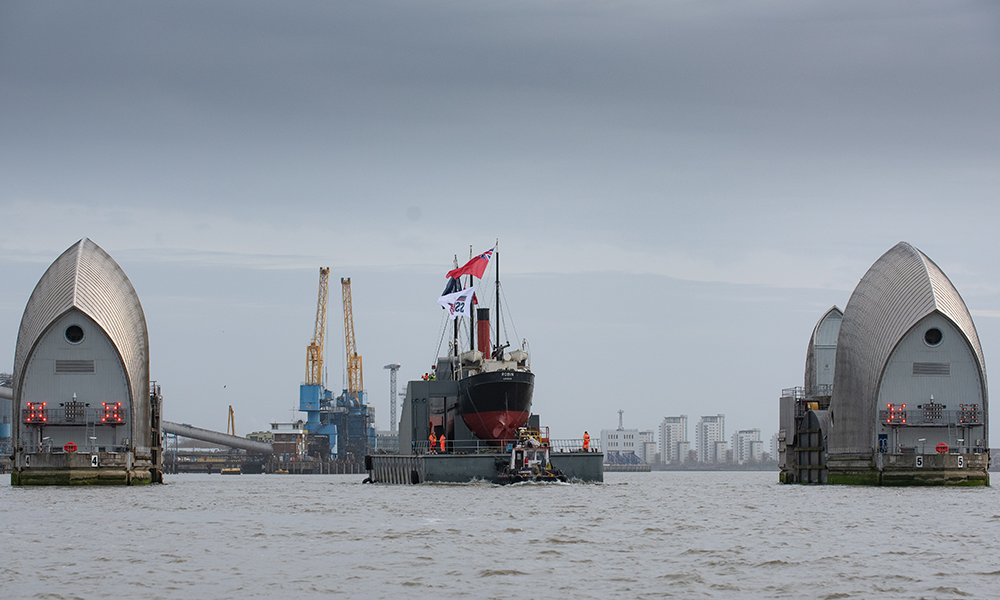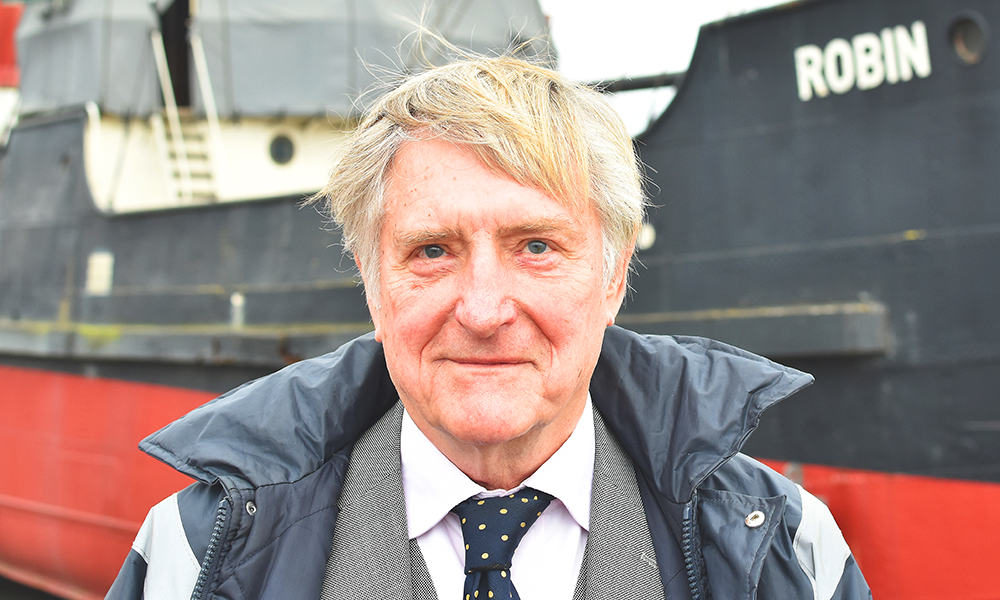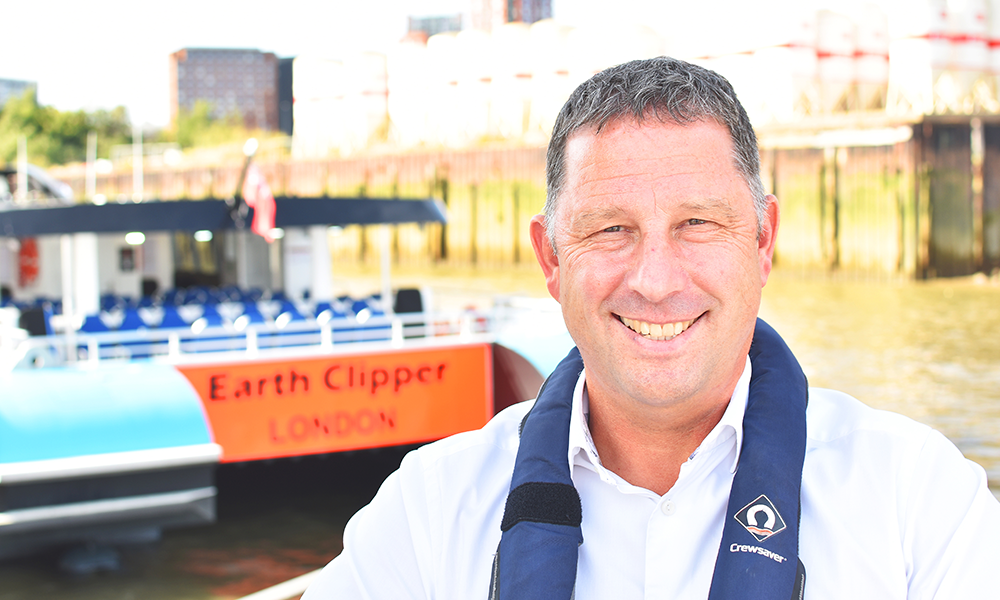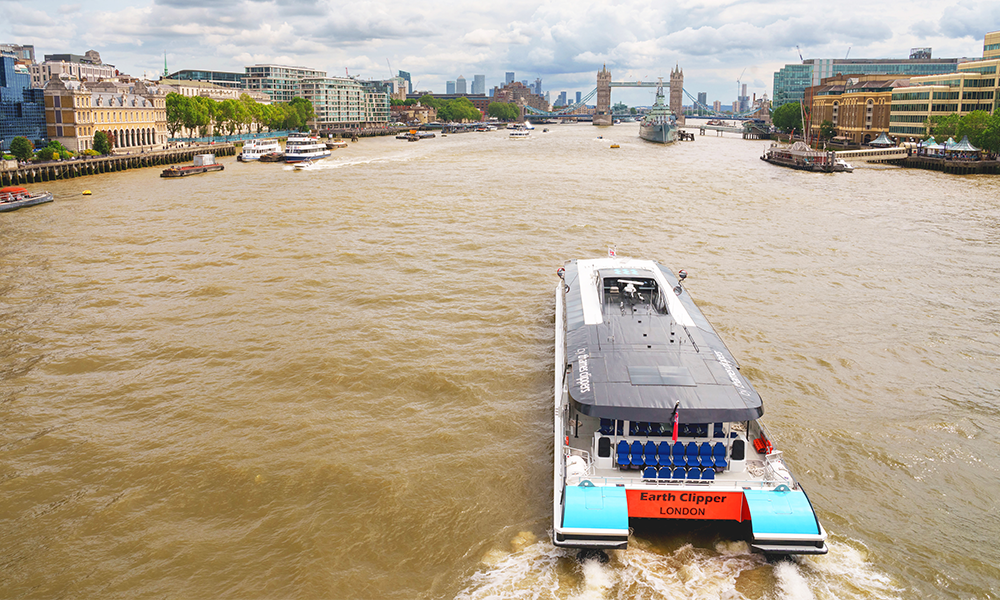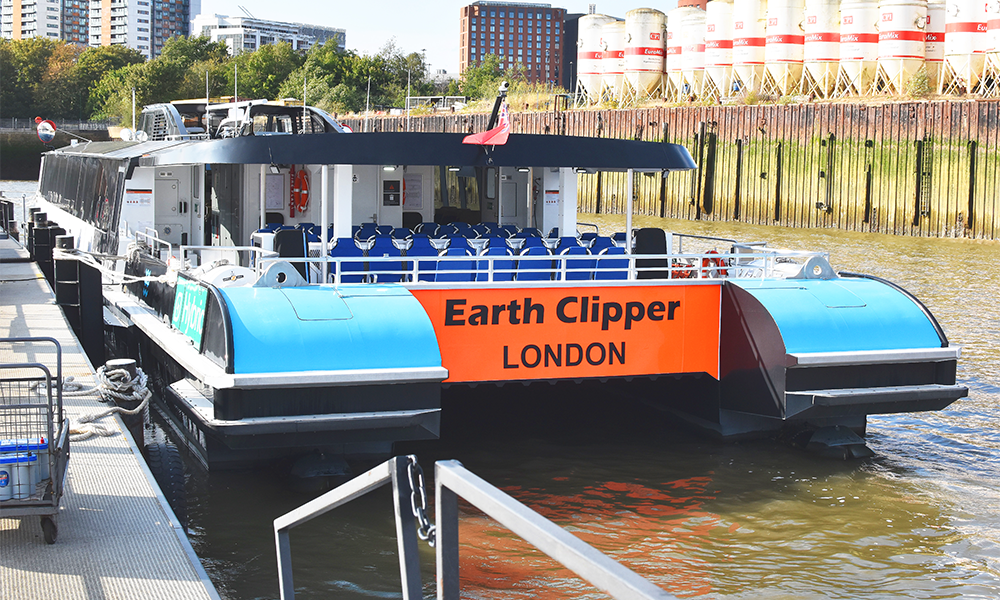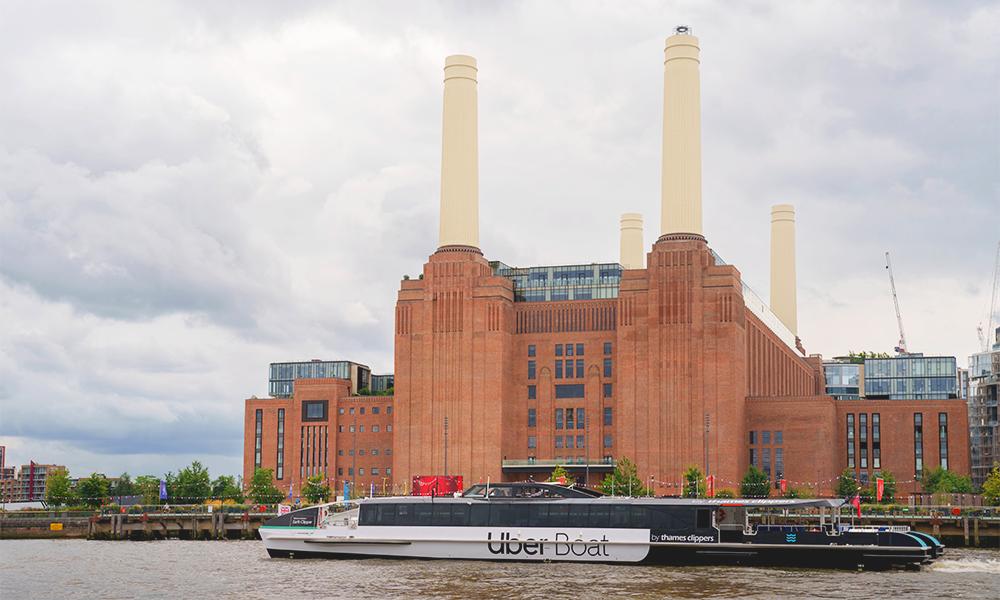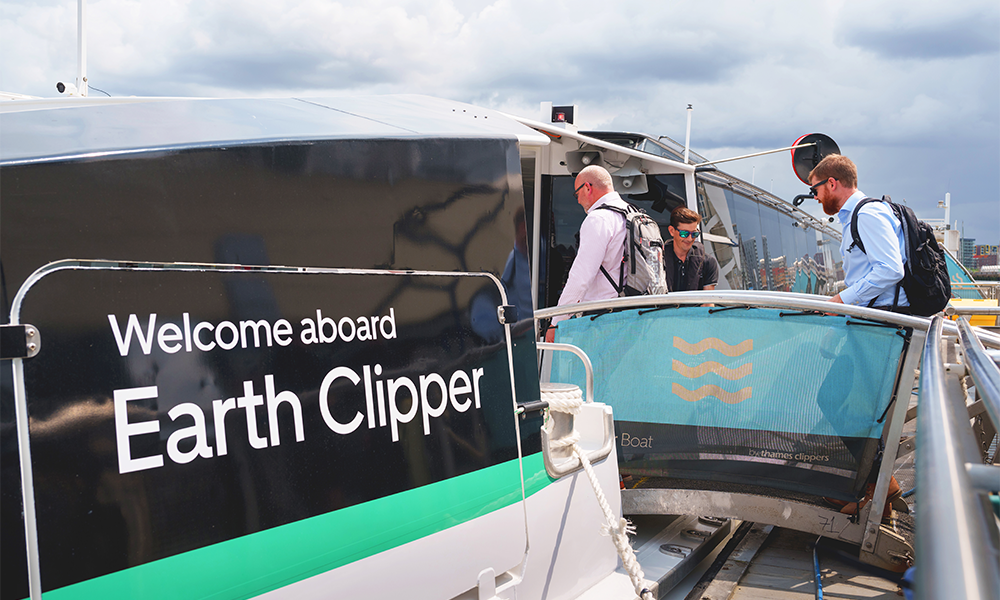London Museum Docklands’ latest major exhibitions recreates Thames foreshore and tells the stories of those who scour its beaches
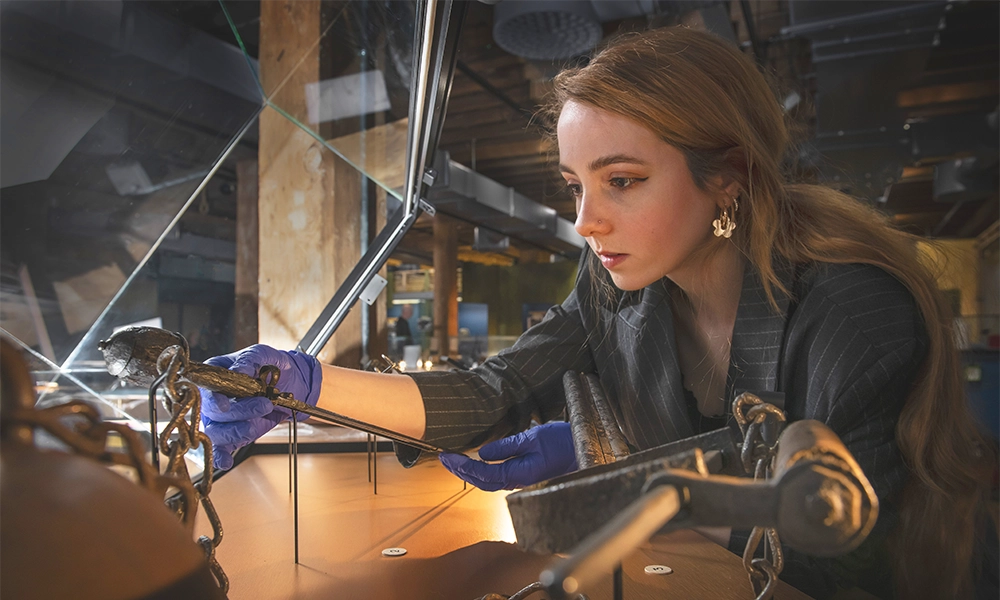
Subscribe to our free Wharf Whispers newsletter here
The tide has washed over the space set aside for major exhibitions at London Museum Docklands and left behind it a rich haul of finds, information and art.
Unveiled this month, Secrets Of The Thames is a hymn to the capital’s longest archaeological site – the river’s foreshore – and those who prowl the edges of the water in search of its treasures.
The exhibition, which runs until March next year, is a celebration and revelation of the long-observed practice of mudlarking – raking through stretches of land that are exposed as the tides reveal London’s beaches and mudflats twice a day.
To that end, curators have combined a vast array of finds with a recreation of the exposed riverbed, artworks and a technical window into how the museum works with the beachcombers to catalogue and preserve historic pieces rescued from the depths.
Today mudlarking is popular – it’s regulated by the Port Of London Authority, which issues 4,000 permits for enthusiasts each year.
It has suspended new applications at present due to a waiting list now exceeding 10,000.
But while 21st century archaeologists, artists and social media producers are driven to dig in the soggy stuff for a variety of lofty motivations, those who went before were often simply scratching a living.
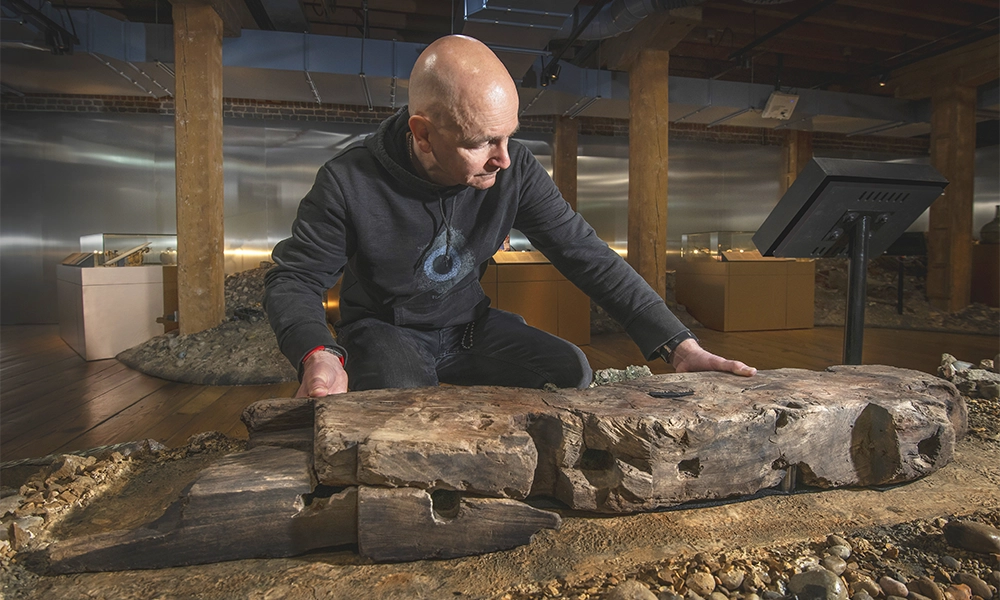
the story in the mud
“We tell the whole story from the earliest mudlarks who were first recorded in the 18th century” said Thomas Ardill, curator of paintings, prints and drawings at London Museum.
“It was probably going on long before that too.
“These people were just searching for useful things to sell – bits of coal and steel, for example.
“They were scavengers, sometimes children, sometimes women – but as they were finding useful objects, they were also digging up historical pieces.
“This was in a period when antiquarians were starting to get interested in London’s history and mudlarks found they could sell artefacts.
“In the exhibition we’re showcasing not just what objects were found, but also the people who found them.
“The earliest mudlarks were entrepreneurs, and they were creative and inspired by what they found.
“Some were conning the art world by creating fakes, but that also showed their creativity and ingenuity.

“A lot of the mudlarks today are fantastic artists and it’s an exhibition that you see through their eyes.
“It’s about the joy of discovery as much as it is about the objects.
“About five years ago, we touched on mudlarking a bit and realised it had potential – Secrets Of The Thames has been a long time in the making.
“We’ve been working closely with Stuart Wyatt, London Museum’s finds liaison officer, whose job it is to record the finds made by mudlarks with permits.
“One of the things I really like in the exhibition is the finds desk. It reveals how we record objects and will feature rotating exhibits.
“At the moment, there’s an Italian ceramic water vessel, which is one of four or five discovered in a particular spot on the Thames over the years.
“There’s definitely something interesting going on in that location.
“Stuart thinks what might have happened is a box containing a shipment may have been broken and been dumped over the side of the ship that was carrying it.”
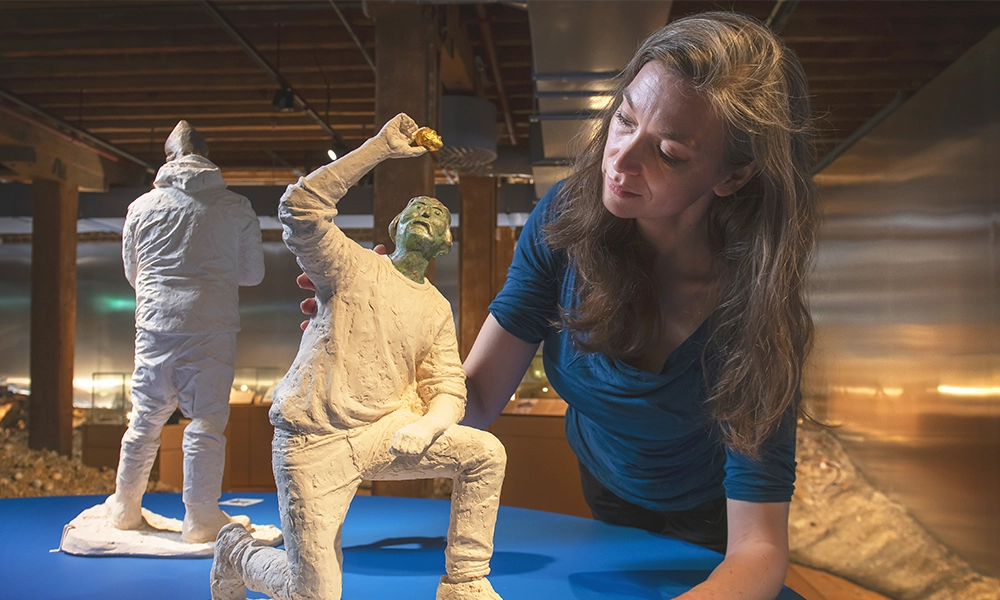
connecting to London’s history through Secrets Of The Thames
With brightly-lit cabinets full of deeply personal items – false teeth, rings, bones and even phallic fertility symbols – it’s also a chance for Londoners to get a sense of the city’s former inhabitants.
“We are lucky in London to have this amazing tidal river environment that has preserved so much of our past,” said London Museum curator Kate Sumnall.
“It is the longest archaeological site in the capital and here we find an unbelievably rich selection of finds, from beautifully worked prehistoric arrowheads to a small, ivory sundial used to tell the time.
“Thanks to the dedication and expertise of today’s mudlarks, we are constantly uncovering new objects that inform our understanding of history.
“Above all this exhibition is an exploration of love and desire, faith and loss, migration, community and culture – the stories of generations of people who have visited the city or called it home.”
With many mudlarks using their finds to create art, the museum has chosen to embrace their creativity and showcase their talents as part of the exhibition.

a mudlark’s tale
Amy-Leigh Bird is a printmaker, sculptor and artist who regularly scours the foreshore in search of inspiration and materials.
One of her pieces is included in Secrets Of The Thames.
She said: “I started mudlarking as a kid, inspired by going to see an exhibition by artist Richard Long at Tate Britain.
“There was a beautiful piece he’d made out of red bricks and so I went down onto the foreshore with my dad and made my own little piece there – that was my first work.
“Then I went to university and started collecting in the rivers in Glasgow, collecting ceramic and glass objects. I also found a gun.
“When I came to London, it just seemed instinctive to go mudlarking.
“At first I was just aimlessly collecting – stuff I was interested in, but that did include bones and teeth, and this grew more into my practice.
“Other mudlarks were looking for coins, pins, garnets and cameos – which are all beautiful and exciting – but I like objects that are uglier.
“We’re all made of bones and teeth come from the mouths of living, sentient beings.
“Animal bones and teeth in the river might have come from meat markets that would feed the people of that time.
“They link back to us, which is really beautiful.
“Coming from a small town, I find that London can be an assault on the senses – it’s relentless.
“When you go mudlarking, there is this wonderful moment, highlighted in the exhibition, when you leave the chaos and noise behind.
“Once you’re on the foreshore, the sounds are different.
“It’s the the waves lapping, the gravel beneath your feet. I end up being there for hours and the time just flies.

“Finding something feels euphoric. It’s personal, it’s mine. I lost a lot of my childhood toys in a house move, which was sad.
“So when I find something mudlarking it’s a sign to me that the object has in some way chosen me, which is a beautiful experience.
“My favourite object in the exhibition is a neolithic bone.
“It’s such a simple object but it’s made me wonder how many of the bones I’ve picked up for my collection are neolithic.
“I originally started making work by finding things and making prints out of them.
“I’d put bones, clay pipes and things together, photograph them and then translate that image into a photo-polymer etching.
“In lockdown, when I couldn’t go out or mudlark, I was stuck at home with a big box of bones and started to think of how I could create work differently.
“That was a shift in my work as an artist, to go from 2D work to sculpture.”
Amy-Leigh’s piece, Ancient Ruins, 2020, is included in Secrets Of The Thames.
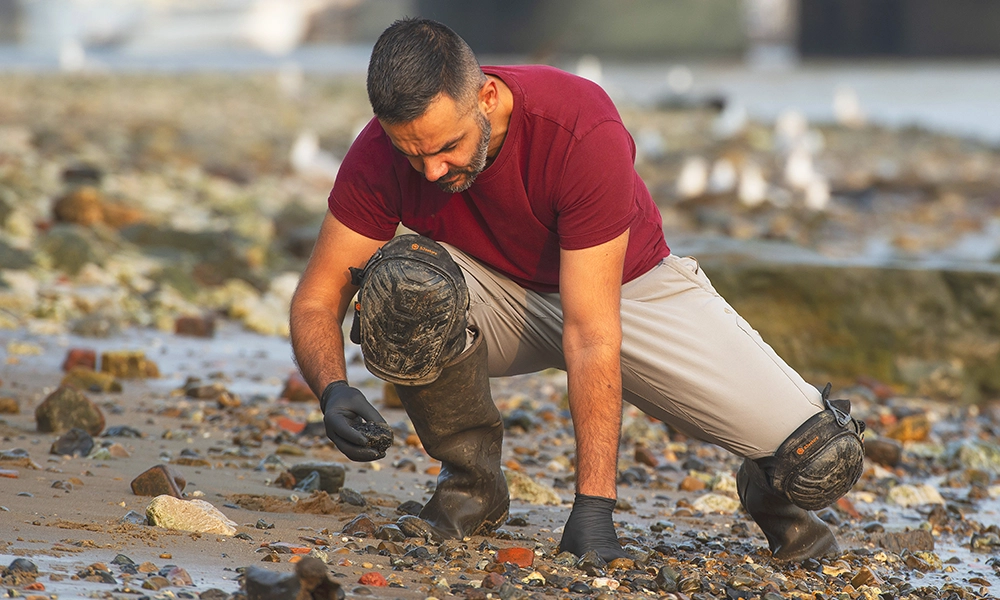
key details: Secrets Of The Thames
Secrets Of The Thames will be at London Museum Docklands until March 1, 2026 and is accessible during normal opening hours.
Tickets are cheaper if booked online in advance and start at £16 for adults.
Find out more about the exhibition here
Read more: How Orbit Clipper is set to become the first all-electric ferry on the Thames




